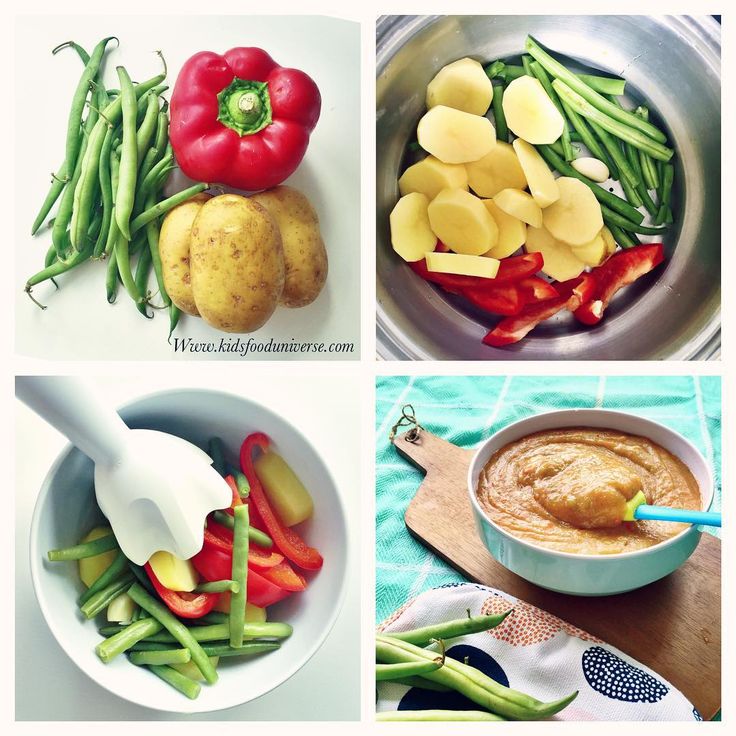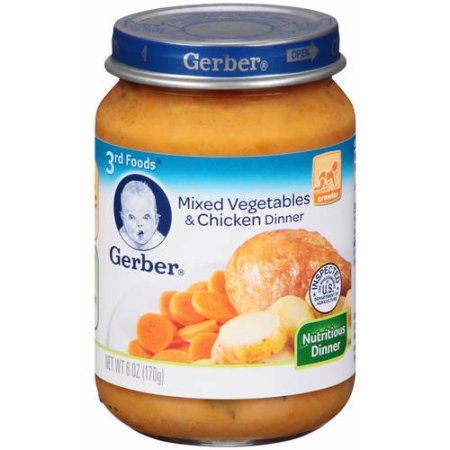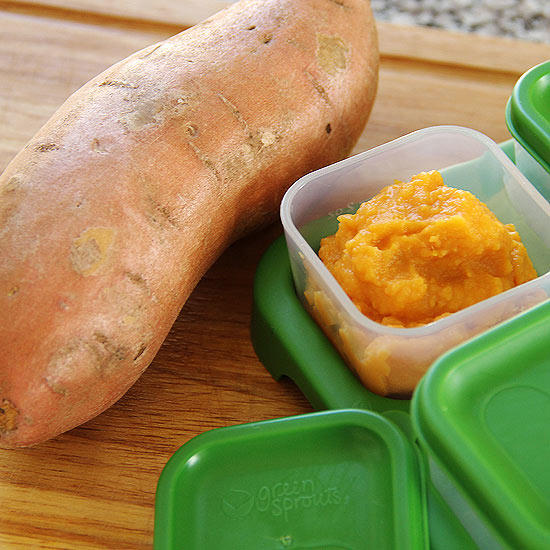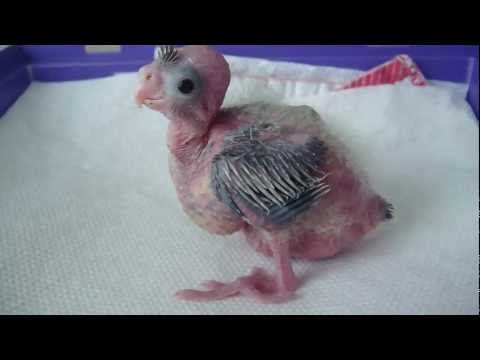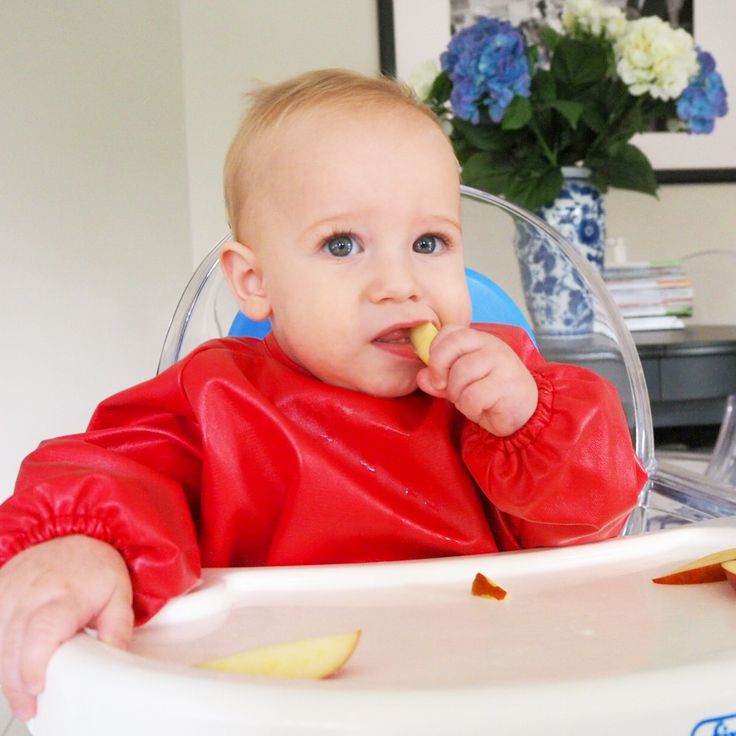Food for 9 month old baby no teeth
125 first foods for babies with no teeth
by Jo
Can you imagine eating food without any teeth? Just with your gums alone? I surely find it hard to picture, but we were once like our little ones. Toothless, like a 100 year old grandma. Luckily, there are first foods for babies with no teeth. And I found 125 of them for you to read about.
PIN IT FOR LATER
The original article was written back in 2018. This is a 2021 updated version.
Since then, I have re-written and updated this post to reflect the changes I have gone through when it came to my own beliefs/thoughts and how I word things when talking about feeding kids. As such, the remains of the original article can be seen in the comments section. Word of caution, it’s not something that makes too much sense anymore and some parts I am not very proud of. I even considered deleting the comments altogether, but that doesn’t seem just right either. Either way, I hope this article helps you, even a bit.
Yes, the Pinterest pins show blueberries and they are a choking hazard, but do read the entire post. I have tried to give suggestions for each type of food so as to make them safe even for little ones.
If I missed anything, give me a shout.
But how can babies even chew without teeth?
Well, the truth is, they don’t need teeth to chew.
Chewing involves movements of the jaw, tongue and cheek. Teeth are used later on to break up more complex fibres.
This is technically done with the teeth that are more at the back of the mouth, called molars. The first molars show up somewhere between 13 and 19 months old, as you can see from the graph below.
So if we were to wait that long before we gave our little ones any food that can be easily munched on with the gums, then we would seriously endanger his or her capabilities of dealing with food (not to mention the fact that after around 8 months, the gag reflex moves further down the tongue and babies might experience a higher risk of choking if they are not accustomed to table foods yet).
Furthermore, babies are already experienced in munching away, because they would have spent a lot of time already with their fingers in their mouth, biting toys and other objects.
So encourage them to explore these with their lips, tongue and jaw, at the same time being careful of any pieces that might come off and increase the risk of choking.
So, assuming little one doesn’t have any teeth yet, what can I give him?
See the list below.
But before anything else, make sure baby meets the three signs he or she is ready to begin in the first place. I cannot stress this enough, guys, and it will save you lots of trouble down the road.
There was a time when the recommendations said to start solids at 4 months+ and I’m not sure that all the baby food manufacturers have come up-to-date with the current official advice regarding infant feeding. Always watch the signs in your baby and judge whether he or she is ready. This usually happens at around 6 months, give or take.
This usually happens at around 6 months, give or take.
Here you go, some ideas of first foods for babies with no teeth. I also added some notes and suggestions of serving for some of them. This is regardless of the method you use, baby led weaning or traditional. At some point, you’ll have to start giving them table foods.
And because I’m a fan of food groups, I have split them accordingly, for easier reference.
Note: please be aware of choking hazards. I find this article sums up pretty well what are the foods you need to pay extra attention to. As your little one develops his ability to chew, you need to be careful, teeth or no teeth.
Fruits and veggies
As a general rule, go for the ripest you can get, in the beginning, as these are usually softer for babies just starting out.
- Avocado. Serve as is, sliced into wedges, or served on toast, mashed, with an egg on top. You can also try a guacamole recipe, which is basically adding some tomato, red onion, a bit of pepper and some lemon juice to a mashed avocado.
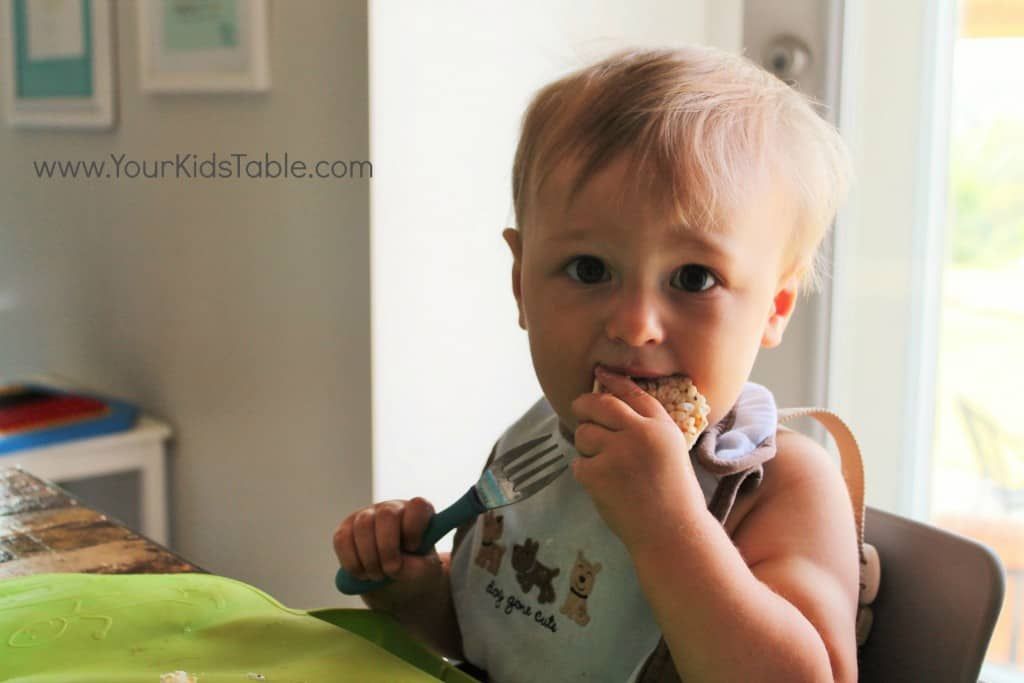 For an easier grip, you can toss it through some breadcrumbs or ground nuts.
For an easier grip, you can toss it through some breadcrumbs or ground nuts. - Banana. Serve as is, sliced or mashed. Here is a tip on how to offer it if baby is at the beginning, doing baby led weaning and has tiny hands. Also, here’s my recipe of baby’s chocolate you can make with banana and avocado.
- Apricot. Pick a softer variety, the riper, the better. Cut into wedges or mash.
- Tomato. Try serving them as such or on top of a pizza toast (just a slice of toast, with some mozzarella and tomatoes and baked for 10 minutes in the oven). My youngest sometimes enjoys it cut wedge-style.
- Peach. Extra ripe are usually softer.
- Mango. Go for the ripe ones.
- Strawberry. Remove the hull (the leafy and usually white part on top) before giving it to baby. Halved would be best. The bigger ones even cut into 4 pieces.
- Watermelon. Melts in the mouth. Remove the seeds and only give the red parts to baby.
- Pear. Peel it and if it’s too hard, you can bake it in the oven for a while, with cinnamon on top.

- Apple. Peel and cook it in the oven, like the pear, or shred it on a grater (I used to do this in the beginning when Emma was small; the finer side of the grater also turns the apple into applesauce).
- Muskmelon.
- Honeydew melon.
- Carrot. Steam, boil or bake in the oven to make it soft. Don’t offer raw to babies just starting out.
- Cauliflower. Steam, boil or bake in the oven with some seasoning on top.
- Broccoli. Here are 10 basic techniques for cooking broccoli from scratch, explained in-depth. Plus, you’re getting a free cheatsheet with the 3 ingredients that make broccoli taste good.
- Potato. Boil, bake or even steam until very soft.
- Sweet potato. Cook in the same way as a normal potato.
- Pumpkin. Bake in the oven until soft.
- Zucchini. Baked or boiled until it’s soft. Also grated works really well, incorporated in baked batters.
- Beetroot. Steam or boil. Be careful, though, as it contains a high amount of nitrates and it is not ok for baby to have in big quantities or too often.
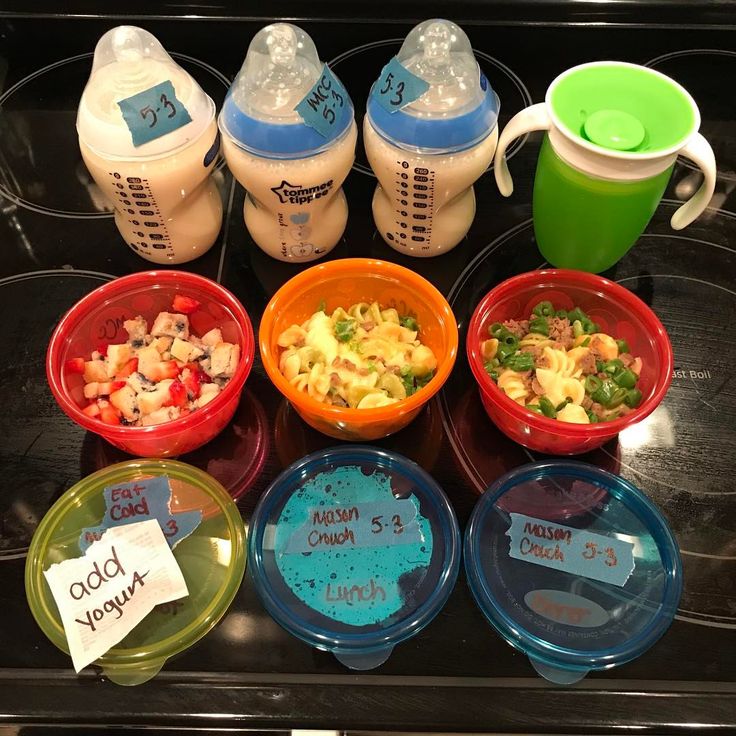 If you offer a varied menu, it shouldn’t be a problem.
If you offer a varied menu, it shouldn’t be a problem. - Grape. Cut them in quarters lengthways. Use this if you’re short on time.
- Satsumas or easy peelers. Cut in half for safety.
- Clementines.
- Raisins. If you leave them to hydrate in water for 1 hour or so they should give up their sweetness. They are a choking hazard as per the link I shared above, so pay extra attention. Better incorporate them in baked foods.
- Blueberry. Smash/squish them for safety or cut them in half.
- Blackberry. I would halve these in the beginning, as there are some quite big.
- Cucumber. I would only offer the middle part in the beginning, as it’s softer and easier to manage for babies just starting out.
- Peas. Great for improving that pincer grasp.
- Sweetcorn.
- Baked beans. Great source of iron.
- Plum.
- Kiwi.
- Dried apricots. Great source of iron, like any dried fruit, really. A bit on the sweet side, so be mindful of that.

- Cherries. Cut in half or quarters.
- Sour cherries. Serve the same as cherries.
- Pineapple.
- Orange. Cut the pieces in half or more.
- Raspberries.
- Olives. Beware of how salty they are. If left in water, they will lose their saltiness.
- Papaya.
- Dried cranberries. Same as raisins, so better incorporate them in a batter/dough.
- Parsnips. Boil, steam or bake in the oven with some seasoning on top. You can remove the center which is usually harder.
- Butternut squash. Bake or steam.
- Bell pepper. Bake or boil.
- Green beans. Boil or steam.
- Chickpeas. Best boiled or turned into hummus or falafel.
- Onion. Boiled or baked.
- Turnips. Boiled until soft. You can make a veggie broth by boiling most of the hard veggies.
- Cabbage. Boiled or baked.
- Mushrooms. Make a sauce for pasta or bake them in the oven.
- Lentils. Turn them into soup or stews.
- Eggplant.
 Baked in the oven is your best bet.
Baked in the oven is your best bet. - Asparagus. Can be a bit hard, but baby can munch away if properly cooked, like in the oven or steamed.
- Edamame. Never cooked them, but I guess either boiled or steamed.
- Kaki fruit.
- Lychee. Just make sure to peel the outer shell.
- Grapefruit. Cut each slice in three smaller pieces or more, depending on size.
- Pomelo. Cut each slice in multiple pieces.
- Lemon. My youngest loves his lemons cut into wedges and he just sucks at the pulp.
- Figs
- Passion fruit
- Yam. It’s a root vegetable and can be cooked in a similar way to a sweet potato.
- Brussel sprouts. Boiled, steamed or baked with seasoning.
- Nectarine. Go for riper ones and cut into wedges.
- Ugli fruit.
- Plantains. They look like bananas, but you have to cook them. They come from Jamaica, I believe.
Related posts
- 14 smash cake ideas – healthy, no sugar
- Blueberry galette (a recipe great for blw)
- 33 tips to easily end picky eating for good
- 5 alternatives to baby cereal that won’t break the bank + 1 tip
- Why you should not feed your baby smoothies, overnight oats, maple syrup and other foods
- Bread and butter pudding (baby friendly, also great for babies with no teeth)
Meat/poultry/fish
- Salmon.
 I usually bake it in the oven, wrapped loosely in baking paper or foil, for around 20 minutes.
I usually bake it in the oven, wrapped loosely in baking paper or foil, for around 20 minutes. - Cod. Cook the same way as salmon.
- Haddock.
- Mince meat. You can cook some meatballs.
- Steak. Serve in shredded strips, like the chicken.
- Chicken. Serve in shredded strips for babies to suck on and munch away later on.
- Tuna. I am guilty of buying cans of it, but if you can bake it from scratch, that’s even better. Squeeze a bit of lemon to give it some flavour.
- Crab. If your little one is not allergic to seafood, you can give it a go.
- Prawns/shrimp. Great finger food.
- Homemade sausages.
Breads/cereal
- Bread. To prevent it from sticking to the roof of the mouth, toast it. Or make some french toast.
- Rice. Great in rice puddings.
- Porridge
- Porridge fingers
- Millet. Boiled in milk or turned into a pudding (see my recipe here)
- Quinoa.
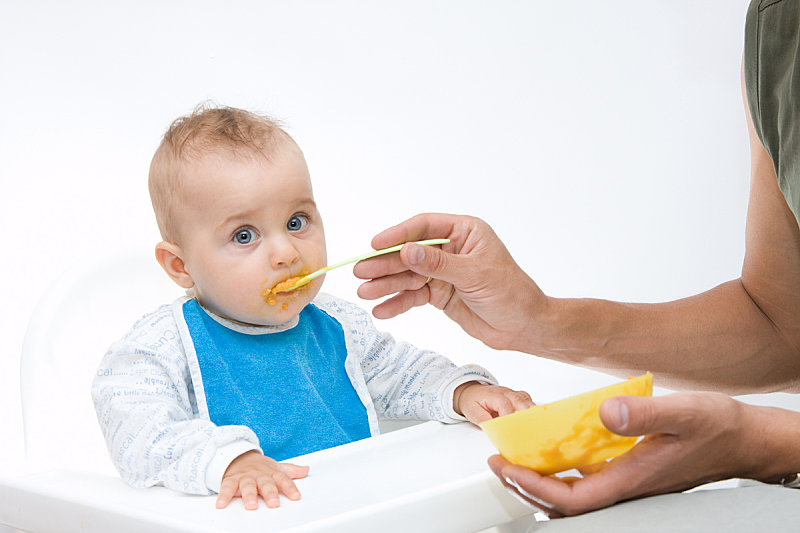 Boiled and eaten as a side or added to porridge, for example.
Boiled and eaten as a side or added to porridge, for example. - Amaranth. Same as quinoa.
- Buckwheat. Same as the above.
- Semolina pudding.
- Spaghetti
- Pasta. Macaroni, penne, fussili or bowtie shapes work well for beginners.
- Noodles
- Homemade pizza
- Polenta
- Cous-cous
- Naan bread
- Pitta bread
- Tortillas
- Rice cakes. Go for the lowest salt option.
- Shreddies. Simple, no flavor, no added salt or sugar, just 100% wholegrain. Serve in milk.
- Focaccia
- Chapatti fingers (an Indian flat bread)
Eggs (in the UK, those that have a lion stamped on the shell are salmonella-free, therefore the yolk can be left runny when cooked – otherwise please cook the yolk completely)
- Boiled eggs
- Poached eggs (only in the UK)
- Fried eggs (just don’t use oil and fry in a non-stick pan)
- Scrambled eggs
- Omlette
- My baked omlette
Dairy
- Yoghurt
- Cheddar cheese.
 Just watch out for salt and the amount present. Grated is best at the beginning.
Just watch out for salt and the amount present. Grated is best at the beginning. - Mozarella. Choose the lowest salt option.
- Sana. It’s an Eastern European type of dairy, similar to yogurt, but slightly drinkable.
- Kefir. Similar to sana. You can find them in the European section in the supermarket.
- Curd cheese. I have a recipe for it here. It’s a no-salt version of cheese, perfect for babies.
- Cottage cheese. Just make sure the salt levels are okay.
Others
- Tofu. Just watch out for the salt content.
- Homemade muffins (try this carrot muffins recipe)
- Homemade pinwheels
- Homemade banana bread
- Homemade biscuits (easiest recipe: 100 g flour, 100 g butter and 100 g of homemade curd cheese or ricotta cheese; everything mixed and baked in the oven)
- Pancakes
- Waffles. Here’s a basic recipe to follow, which is infinitely customizable. A bit of waffle theory never hurt.

- Fritters. I have a recipe here, very adaptable to what you have in your pantry.
- Homemade nuggets
- Any homemade cake-like consistency, as long as there is no sugar, maple syrup, honey (if baby is under 1 year old), whole nuts, etc.like this baked oatmeal cake.
- Homemade popsicles or anything that’s made out of fruit and yogurt and frozen.
- Peanut butter. It is best to spread it on toast or on slices of banana. Just make sure it’s 100% nuts.
- Almond butter. Same as peanut butter.
- My apple pudding
BONUS:
126. 2 ingredient cookies. The easiest snack ever. Pair it with some dairy and you’re good to go.
127. 3 ingredient pancakes. The fluffiest and easiest pancake recipe out there. Make sure to read my notes on timing and flipping and why those are the key elements for the fluffiness.
128. Spiced biscuits. I think these are great for when little ones are teething.
129. Easy scones. With only 3 ingredients at the base, these are soft and fluffy.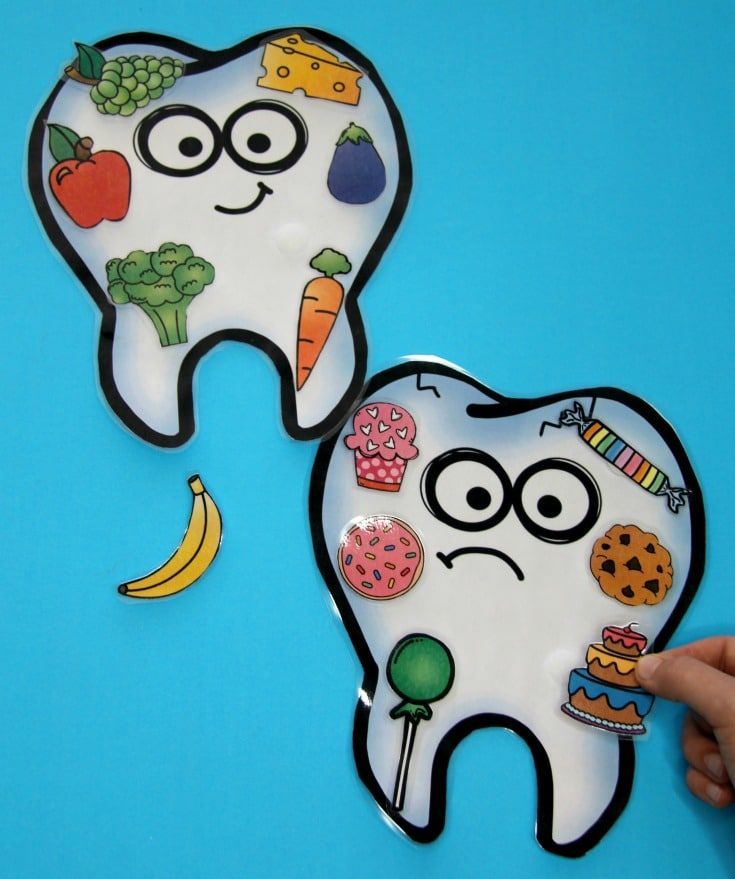 Don’t overmix the batter though.
Don’t overmix the batter though.
130. A kid friendly brownie with a secret nutritious ingredient.
You are probably thinking: is there anything she hasn’t mentioned?
In fact, I haven’t mentioned the leafy vegetables, like spinach, lettuce, salad etc because babies might have a hard time tearing them apart so as not to stick to the roof of their mouths.
I also didn’t mention pomegranate, because of its high choking risk.
What comes next?
Knowing what to feed your kids might be a little easier now that you have this list, but actually getting them to eat or at least try any food is another story entirely.
This is why I have put together a 7-part blog series about how to get your little one to eat any food. It is based on more than 3 years of feeding little tummies, observing and taking mental notes about everything I did and everything they did at mealtimes.
I think you’ll find it useful and worth reading. You can save it on Pinterest for later reading or share with someone you know.
You can save it on Pinterest for later reading or share with someone you know.
Thanks!
Ioana x
START READING HERE >>
Categories Baby food, Blog, Featured, The basics Tags baby led weaning, BLW, finger foods, first foods© 2022 WEANINGFUL • Built with GeneratePress
101 foods for babies with no teeth
Wondering what finger foods for your baby with no teeth? Here are some of the foods that they can safely manage to eat!
I did Baby Led Weaning with both of my kids. That means that at the age of 6 months (assuming they can sit very well in a high chair) they started getting whole foods.
No baby food, no mush, no purees. Actual normal human food.
I know this is scary for a lot of parents and caregivers and I’m not here to pressure you to feed your baby any way or another!
But I specifically remember being at the library’s mommy and me class with Luke and a mom asking what he eats. I told her he ate a hamburger for lunch. He was probably 7 or 8 months old at the time.
He was probably 7 or 8 months old at the time.
The other mom scoffed at me and said well her baby didn’t have any teeth.
I remember looking at Luke drooling on the rug with his one sad little bottom middle tooth and laughing to myself if she thought that tooth was really tearing into the burger meat!
I don’t mean that to laugh at the other mom at all. Just to say that babies don’t really need teeth to eat.
There are a lot of finger foods for 6 month old babies with no teeth. There are a lot of snacks for babies with no teeth!
Their gums are great at smashing and chewing solid food, teeth or not!
That being said, I steered clear of anything overly sharp or crunchy. Though, my daugther is currently 9 months old with only 2 bottom teeth and eats a LOT of goldfish.
We offer our kids 3-5 things at each meal. Go with small amounts of each and give seconds if needed!
Regardless, starting solids is a personal choice for the parents. If you are introducing finger foods – usually 6 to 10 months of age – here are some ideas to get you started!
A note about choking
I’m not going to lie. Choking is TERRIFYING. It’s horrific to imagine and as babies start eating, they are going to gag and choke a little bit. Here are some things that made me feel better.
Choking is TERRIFYING. It’s horrific to imagine and as babies start eating, they are going to gag and choke a little bit. Here are some things that made me feel better.
Watch YouTube videos showing choking vs. gagging. It will make you feel more comfortable and know what to look out for.
Familiarize yourself with the best and safest way to cut foods. It’s actually easier for small babies to eat long sticks than food cut into small pieces (until they develop the pincher grip). We have this Baby Led Feeding book and it has great diagrams on how to cut foods.
Make an OK sign with your thumb and pointer finger. Never serve anything round smaller than that circle. Smush blueberries, and quarter anything else.
Get CPR and heimlich maneuver certified for children and adults.
If it makes you feel better, keep a Dechoker on hand and know how to use it.
**Always consult with a doctor if you are concerned about your child’s diet. I am not a doctor, just a mom!*
The best food for babies with no teeth
Here are some of my kids’ favorite foods before they got teeth! I organized this list by food type, so find exactly the thing you need to complete you next meal!
- Banana- cut in half moons
- Smooshed blueberries
- Sliced strawberries
- Mandarin oranges
- Diced canned/pop top peaches, drained
- Wedges of watermelon (for sucking)
- Blackberries – cut in half or quartered lengthwise
- Diced mango (an absolute favorite for both my kids!)
- Pineapple tidbits – canned or fresh
- Diced apples, sautéed with butter and tossed with cinnamon
- Diced pears – fresh, they go brown quickly
- Sliced prunes (great for constipation)
- Raisins – beware, they can rehydrate inside their bellies and come out… large
- Kiwi – peeled and sliced
- Grapes – quartered
- Slices of lemon or lime – people do this to be mean but our son LOVED them at restaurants
- Applesauce – in a pouch or on a spoon
- Fresh peaches – diced (you can leave the peel on small pieces!
- Raspberries – cut or torn in half
- Smoothie (cup with a straw)
- Roasted sweet potatoes – peeled wedges or sticks, with skin removed
- Baked or sautéed carrots (cut in half moons)
- Mashed potatoes (pre-loaded spoon)
- Mashed sweet potatoes (pre-loaded spoon)
- Roasted squash – sticks or half moons
- Mashed avocado or mild guacamole preloaded on a spoon
- Zucchini noodles with sauce
- Diced tomatoes
- Green peas – by the handful
- Chick peas – roasted and smashed so they are no longer round
- Avocado chunks – toss with breadcrumbs or coconut to make less slippery
- Cucumber – peeled and cut into sticks
- Cooked corn – I use canned
- Broccoli – roasted, cut into very small pieces
- Pickles – quartered lengthwise or sliced into half moons
- Plain full fat yogurt (pre-load a spoon)
- Shredded cheese
- Sliced cheese – torn into fingernail sized pieces
- Block cheese – cut into small sticks
- Fresh mozzarella, torn
- Cheese sticks – cut in half moons or quartered in sticks
- Babybel cheese, whole or broken up
- Shredded chicken
- Meatballs (both our kids’ first foods was a meatball!)
- Meatloaf – cut into bite sized pieces
- Chicken nuggets – cut into small bites
- Fish sticks – but into small bites
- Pepperoni – diced or torn
- Deli meat – torn into bite sized pieces
- Bacon – thin cut, don’t cook it too crispy, cut into 1/2″ wide slices
- Sausage – quartered lengthwise
- Hamburger – broken into bite sized pieces
- Corn dogs – quartered lengthwise
- Ground turkey
- Ground beef
- Ground chicken
- Ground pork
- Sausage or hotdogs – quartered lengthwise and sliced
- Shredded/flaked fish
- Shredded pork
- Black beans
- Veggie burger – cut in sticks or squares
- Scrambled egg chunks
- Hardboiled egg – diced
- Omelet cut into strips or diced
- Fruit and Veggie Melts
- Baby puff cereal
- Goldfish crackers
- Cheerios
- Animal crackers
- Vanilla wafers – broken in half or mini size
- Teddy grahams or Annies bunnies – broken in half
- Belvita breakfast crackers
- Veggie straws – whole
- Peanut butter bambas
- Dehydrated carrots – broken up
- Round crackers (like you’d use for cheese and crackers)
- Toasted bread with butter, peanut butter, or jelly
- Hash browns – whole or broken up
- Rice cakes – minis broken in half or large ones quartered
- Mini pancakes – halved
- Toast strips with mashed avocado (a fave for millennial parents)
- Waffles – cut into strips
- Biscuits – torn into bite sized pieces
- Muffins – torn into bite sized pieces
- English muffins – toasted, torn into strips
- Bagels – sliced into 1/2″ thick slices
- French fries whole or torn up
- Sweet potato fries – whole or torn up
- Pizza – cut into squares
- Spaghetti with sauce of choice
- Lo mein noodles (our daughter slurps them up!)
- Lasagna, cut into bite sized pieces
- Macaroni and cheese (tubes are easier than shells for little babies)
- Microwave cheese quesadilla on taco shells – cut into strips
- Corn cakes, cut into bite sized pieces
- Couscous (we like the pearl) on a spoon or messily by hand
- Pasta – we love penne, cut in half lengthwise for small babies
- Taco shell pizzas (taco shell with sauce + cheese, baked) cut into strips or bites
- Pita, torn into bites, with dip
- Hummus, pre-loaded on a spoon
What are your favorite foods for babies without teeth?
Thanks for reading!
Sharing is caring!
menu for a week, diet for a 9 month old baby with artificial and breastfeeding
Published: 06/20/2020
Reading time: 5 min.
Number of reads: 216537
The author of the article: Ponomareva Yuliya Vladimirovna
Pediatrician, Candidate of Medical Sciences, Allergist-Immunologist
Your baby is 9 months old, and it's time to adjust his nutrition again. The activity of digestive enzymes is already high, teeth erupt in the crumbs, and the volume of the stomach becomes larger, which determines the possibility of increasing the amount of food per feeding and further expanding the diet. What can a child eat at 9months?" - this question very often worries the parents of a grown baby. By this age, the baby's nutrition already includes all the main food groups, and parents should try to diversify the child's menu, expanding the range of his taste sensations. In addition, a varied diet naturally provides a wide range of nutrients. Let's focus on the main food groups that should be on the menu of a 9-month-old baby.
Contents: 9-month-old baby is not enough, so mother's milk should now be no more than a third of the diet. It is best to leave breastfeeding (HF) before bed at night, as well as immediately after waking up in the morning. If the baby is formula-fed, an adapted formula for babies over 6 months of age can be offered at these meals.
It is best to leave breastfeeding (HF) before bed at night, as well as immediately after waking up in the morning. If the baby is formula-fed, an adapted formula for babies over 6 months of age can be offered at these meals.
See also: Complementary foods and dishesmonths in an amount of at least 200 grams per day. It is a source of minerals, vegetable fibers and organic acids. The assortment of vegetables is very wide, which allows them to be evenly distributed throughout the week. In addition to potatoes, zucchini, cabbage, carrots - traditional vegetable complementary foods for children in the second half of life, pumpkin, beets, spinach and tomatoes can be used in the nutrition of a 9-month-old baby. At this age, if the baby is not worried about excessive bloating, the diet can be diversified with legumes. Start with mashed green peas as a side dish with a meat dish or as an addition to a vegetable soup for dinner.
Fruit and berry complementary foods
Fruits and berries have low nutritional value, but, despite this, they are actively used in the daily diet of a 9-month-old child. Fruits are rich in natural sugars and have an attractive aroma that enhances the palatability of many dishes and is liked by kids. In addition, such food is a source of valuable minerals, organic acids and fiber, which determines its biological significance. It is optimal to include a fruit and berry component 3-4 times a day, it can be a fruit dessert for an afternoon snack, an additional component in the composition of porridge or a curd dish. Every day, a baby can consume up to 90 grams of fruit. By 9 months, it is already permissible for a child to give garden and wild berries, bananas, plums and apricots. Expand the fruit menu consistently and take your time to introduce foods with high allergenic potential, such as citrus fruits, melons, strawberries and exotic fruits.
Fruits are rich in natural sugars and have an attractive aroma that enhances the palatability of many dishes and is liked by kids. In addition, such food is a source of valuable minerals, organic acids and fiber, which determines its biological significance. It is optimal to include a fruit and berry component 3-4 times a day, it can be a fruit dessert for an afternoon snack, an additional component in the composition of porridge or a curd dish. Every day, a baby can consume up to 90 grams of fruit. By 9 months, it is already permissible for a child to give garden and wild berries, bananas, plums and apricots. Expand the fruit menu consistently and take your time to introduce foods with high allergenic potential, such as citrus fruits, melons, strawberries and exotic fruits.
Grain-based complementary foods
Grain-based foods continue to be the most important source of nutrition and energy for a 9-month-old baby. By this age, the assortment of cereals is increasing, on the basis of which you can cook porridge for your baby. In addition to traditional buckwheat, rice, corn, oat and wheat groats, you can expand the diet with multi-cereal porridge, which may also include rye, barley and millet. When choosing a method for preparing porridge, preference should be given to industrial products. In addition to guaranteed environmental and microbiological safety, the enriched composition provides a daily supply of vitamins and minerals. AT 9months, the child can already eat bread and special baby biscuits without prior dissolution. It is preferable to use wheat bread, no more than 10 grams per day. It is better to dry it before use for easier digestion. Children's cookies are not only a delicacy and a source of energy for the baby, the multi-cereal composition and enrichment with a vitamin and mineral premix favorably distinguishes this healthy food product from traditional bakery products.
In addition to traditional buckwheat, rice, corn, oat and wheat groats, you can expand the diet with multi-cereal porridge, which may also include rye, barley and millet. When choosing a method for preparing porridge, preference should be given to industrial products. In addition to guaranteed environmental and microbiological safety, the enriched composition provides a daily supply of vitamins and minerals. AT 9months, the child can already eat bread and special baby biscuits without prior dissolution. It is preferable to use wheat bread, no more than 10 grams per day. It is better to dry it before use for easier digestion. Children's cookies are not only a delicacy and a source of energy for the baby, the multi-cereal composition and enrichment with a vitamin and mineral premix favorably distinguishes this healthy food product from traditional bakery products.
Meat food
By the age of 9 months, the baby is already well acquainted with meat complementary foods, and he already has favorite combinations with vegetable and cereal products.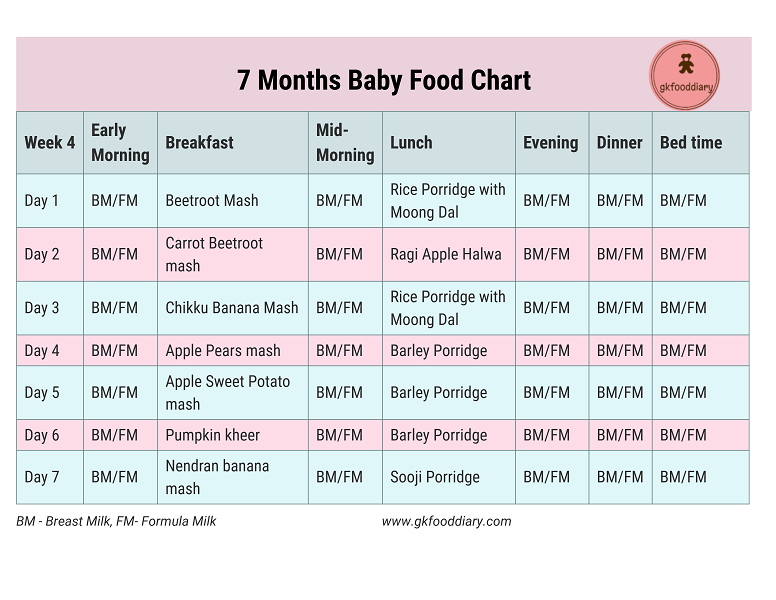 What changes await him during this period? The development of the maxillofacial apparatus makes it possible to move from puree-like grinding of meat to various options for meatballs and steam cutlets. In the daily menu, meat complementary foods should be at least 60 grams. In addition to beef and veal, turkey, chicken and rabbit, the baby can be offered dishes based on pork, lamb and horse meat. Meat lure is a traditional lunchtime meal. This feeding accounts for up to 40% of the energy needs of the baby, which is satisfied by a rational combination of vegetables, meat and grains.
What changes await him during this period? The development of the maxillofacial apparatus makes it possible to move from puree-like grinding of meat to various options for meatballs and steam cutlets. In the daily menu, meat complementary foods should be at least 60 grams. In addition to beef and veal, turkey, chicken and rabbit, the baby can be offered dishes based on pork, lamb and horse meat. Meat lure is a traditional lunchtime meal. This feeding accounts for up to 40% of the energy needs of the baby, which is satisfied by a rational combination of vegetables, meat and grains.
Fish
At 9 months, a new food product appears in the baby's diet - fish. In addition to easily digestible protein, it is a valuable source of iodine, fluorine, phosphorus, iron, zinc and magnesium, as well as a number of vitamins. In the diet of young children, ocean fish is primarily used. This variety is rich in polyunsaturated fatty acids, including omega-3, which are extremely important for the functional maturation of the central nervous system and the formation of the retina. However, fish protein is a powerful allergen, so this type of complementary food should be introduced with caution. Start with a teaspoon of fish puree at lunchtime and keep a close eye on changes in your baby's health. In the next two days, do not give the child any new foods so that there is no doubt about the tolerance of the product. Within a month, the amount of fish puree can be gradually increased to 30 grams, but introduced into the menu no more than 1-2 times a week.
However, fish protein is a powerful allergen, so this type of complementary food should be introduced with caution. Start with a teaspoon of fish puree at lunchtime and keep a close eye on changes in your baby's health. In the next two days, do not give the child any new foods so that there is no doubt about the tolerance of the product. Within a month, the amount of fish puree can be gradually increased to 30 grams, but introduced into the menu no more than 1-2 times a week.
Sour-milk products
Specialized non-adapted sour-milk drinks (kefir, yogurt, biolact) can be used in a 9-month-old baby's diet. Unlike whole cow's milk, the protein and lactose in them are partially split, which determines their better digestibility, low allergenicity and a slight burden on the kidneys, provided that they consume no more than 200 ml per day. The most preferred choice among the products of this group are drinks based on probiotic cultures, which have a positive effect on their own intestinal microbiota. Cottage cheese is a valuable source of calcium and a complete protein in terms of amino acid composition. AT 9months, it is given to a child in an amount of not more than 50 grams per day in combination with a fruit, vegetable or cereal filler.
Cottage cheese is a valuable source of calcium and a complete protein in terms of amino acid composition. AT 9months, it is given to a child in an amount of not more than 50 grams per day in combination with a fruit, vegetable or cereal filler.
Fats
Butter is added to prepared meals in the amount of 5 grams per day, improving the taste of prepared complementary foods, as well as increasing their nutritional and energy value. Vegetable oils are rich in polyunsaturated fatty acids, so they should also be present in the baby's daily menu at 5 grams per day as an additive to meat, vegetable or fish dishes.
Drinks
Babies meet their physiological fluid needs through mother's milk or adapted formula. But at 9 months, the consumption of mother's milk is noticeably reduced, so it is necessary that the baby receive other drinks. If your child is thirsty, encourage him to drink baby water. The balanced mineral composition and the absence of sugars make it the best option for satisfying fluid needs. Water should be drunk between meals so as not to overload the digestion process. To diversify the diet, you can use specialized children's tea based on extracts of herbs and dried fruits. The pleasant taste of such drinks is combined with a calming and normalizing effect on the digestion process.
Water should be drunk between meals so as not to overload the digestion process. To diversify the diet, you can use specialized children's tea based on extracts of herbs and dried fruits. The pleasant taste of such drinks is combined with a calming and normalizing effect on the digestion process.
How to make a diet for the day
The standard diet at 9 months includes 5-6 meals. Each of them is necessary for the even distribution of all nutrients and ensuring vigorous activity during the daytime and a full healthy sleep at night. The table shows an approximate menu for one day for a healthy baby of 9 months.
| Eating | 900 Vegetable puree (zucchini+colored cabbage)/olive oil/yolk | 100/2/2/10 | |||
|
| Meat steamy cutlet | 9000 9000 9000 9000 9000 9000 9000 9000 9000 9000 9000 9000 9000 9000 9000 9000 9000 9000 9000 9000 9000 9000 9000 9000 9000 9000 9000 9000 9000 9000 9000 9000 9000 9000 9000 9000 9000 9000 9000 9000 9000 9000 9000 9000 9000 9000 9000 9000 9000 9000 9000 9000 9000 9000 9000 9000 Dried wheat bread | 50003 | Breast milk/adapted formula | 200 |
Rate the article
(Number of votes: 26, average 4.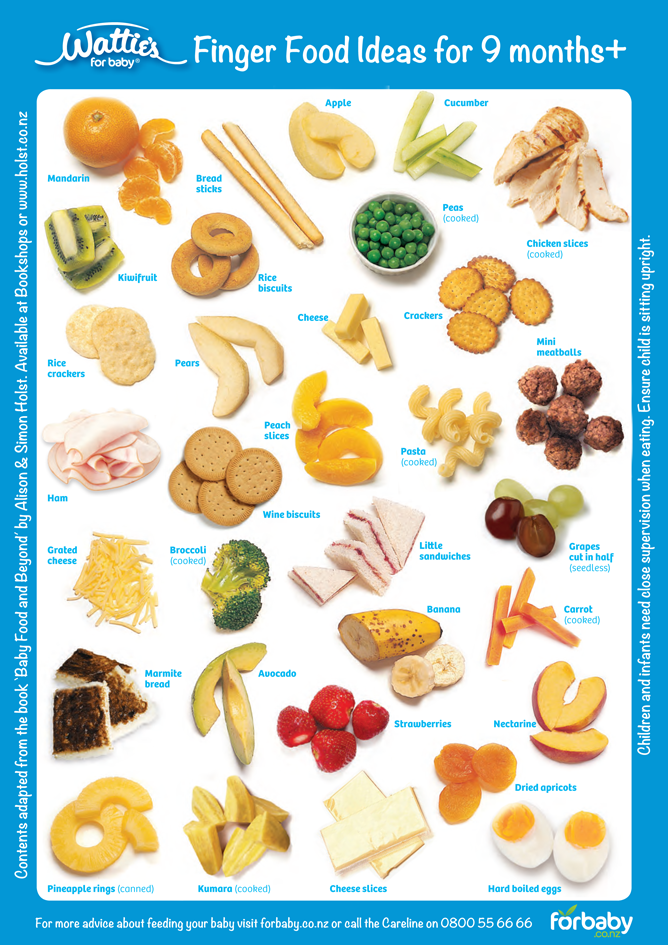 8)
8)
Share with friends:
Baby menu at 9 months
6-12 months
Article
5/5 1 reviews
Although breast milk or formula remains the mainstay of an infant's diet at this age, a 9-month-old baby's menu becomes more varied with new complementary foods. The correct diet of the child is the basis of his harmonious development, good health and good mood. But how to organize a diet, what can be given at this age and how much should a child eat at one meal?
8 min. for reading Feb. 17, 2022
The correct diet for a nine-month-old baby includes 5 meals: a day the baby receives liquid food twice and thick food three times. This is due to the fact that mashed potatoes and cereals take longer to digest than milk, so they give the baby a longer energy supply. Feeding is usually carried out at intervals of 4 hours. If the baby asks to eat 2-3 hours after liquid food, offer her a baby snack, fruit or vegetable (in small pieces or in the form of a puree).
This is due to the fact that mashed potatoes and cereals take longer to digest than milk, so they give the baby a longer energy supply. Feeding is usually carried out at intervals of 4 hours. If the baby asks to eat 2-3 hours after liquid food, offer her a baby snack, fruit or vegetable (in small pieces or in the form of a puree).
A 9-month-old baby's daily diet includes many healthy foods and drinks that provide essential nutrients such as vitamins, proteins, carbohydrates, fats and minerals. In addition to milk and infant formula, the following products can be given to a child:
- Fruits and vegetables in the form of puree (apple, pear, cauliflower, etc.)
- Fruit juices and compotes without sugar.
- Meat in various forms.
- Fish.
- Kashi from various cereals.
- Chicken or quail egg yolk.
- Children's fresh cottage cheese.
- Children's low-fat kefir.
- Children's cookies, croutons, bread.
Read also: The baby refuses new products
According to WHO recommendations, by the 9th month, all of the above products should already be on the menu. If something from the food is still unfamiliar to your child, it is recommended to gradually add it to the diet.
If something from the food is still unfamiliar to your child, it is recommended to gradually add it to the diet.
Start with smaller portions and see how your child reacts to the new food. If there is no allergic reaction to the product, you can increase the volumes and add it to new dishes. New complementary foods are recommended to be introduced at intervals of 5-7 days. An indicative table for one day will help to make an optimal diet for health. It also shows how much formula or milk the baby should eat per day.
* infant formula.
**Dairy-free porridge should be diluted with breast milk or infant formula given to the baby. Milk porridge is diluted with water.
| I feeding 6 hours | Breast milk or formula for infants with intolerance to cow's milk proteins | 200 ml |
| II feeding 10 hours | Dairy-free porridge* | 180 g |
| Vegetable oil< | about 1 tsp | |
| Fruit puree (apple, pear) | 70 g | |
| III feeding 14 hours | Vegetable puree or pureed soup | 180 g |
| Vegetable oil | about 1 tsp. | |
| Meat puree (rabbit, turkey) | 50 g | |
| Fruit juice | 70 g | |
| IV feeding 18 hours | Fruit puree | 50 g |
| Vegetable puree or dairy-free porridge | 180 g | |
| Vegetable oil | about 1 tsp. | |
| Meat puree | 50 g | |
| V feeding 22 hours | Breast milk or formula for infants with intolerance to cow's milk proteins | 200 ml |
*dairy-free porridge should be diluted with breast milk or it is safe for children with allergies to cow's milk proteins.
** you can eat porridge or vegetables, so you can eat grass - porridge with vegetables.
1st day
| First breakfast | Breast milk or formula |
| Second breakfast | Buckwheat porridge with pumpkin, juice |
| Lunch | Pumpkin steam cutlets, veal puree |
| Snack | Rusks or baby biscuits, yoghurt |
| Dinner | Cauliflower puree |
| Second dinner | Breast milk or formula |
2nd day
| First breakfast | Breast milk or formula |
| Second breakfast | Oatmeal, berry juice |
| Lunch | Steamed fish, rice, fruit compote |
| Snack | Vegetable puree |
| Dinner | Vegetable puree |
| Second supper | Breast milk or formula |
3rd day
| First breakfast | Breast milk or formula |
| Second breakfast | Semolina porridge, quail egg yolk |
| Lunch | Steamed zucchini, boiled veal, apple compote |
| Snack | Pumpkin and apple puree |
| Dinner | Curd casserole with carrots |
| Second supper | Breast milk or formula |
Fourth day
| First breakfast | Breast milk or formula |
| Second breakfast | Rice porridge, fruit puree |
| Lunch | Mashed potatoes or turkey meatball soup |
| Snack | Carrot-apple juice |
| Dinner | Kefir |
| Second supper | Breast milk or formula |
5th day
| First breakfast | Breast milk or formula 9009eight |
| Second breakfast | Oatmeal and apple puree |
| Lunch | Cream soup with chicken and vegetables |
| Snack | Carrot juice |
| Dinner | Cauliflower puree, crackers or bread |
| Second supper | Breast milk or formula |
6th day
| First breakfast | Breast milk or formula |
| Second breakfast | Rice porridge, half yolk (chicken egg) |
| Lunch | Vegetable soup with chicken breast, juice |
| Snack | Baked apple |
| Dinner | Spinach mashed potatoes |
| Second supper | Breast milk or formula |
7th day
| First breakfast | Breast milk or formula |
| Second breakfast | Millet porridge, croutons |
| Lunch | Steamed chicken cutlets, vegetable puree |
| Snack | Apple juice |
| Dinner | Curd with fruits |
| Second dinner | Breast milk or formula |
Parents need to gradually accustom their child to eating thick foods, because now he is moving to a new level of development: more teeth appear, so the baby can now chew food.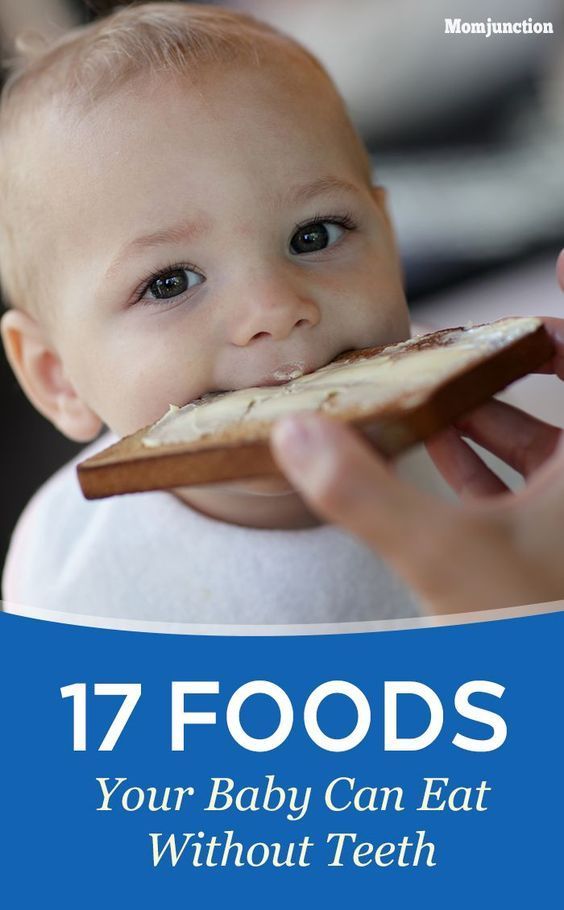 If this is not done in a timely manner, a baby may refuse solid food in a year. Changing the consistency of dishes favorably affects the development of the digestive system.
If this is not done in a timely manner, a baby may refuse solid food in a year. Changing the consistency of dishes favorably affects the development of the digestive system.
No need to grind fish and potatoes in a blender - just put the food on a plate and mash well with a fork. Meat can be offered in the form of meatballs to develop chewing skills. It can be turkey, rabbit, veal, beef, chicken. The norm of meat for one meal is 60-70 g.
It is quite normal if at first large pieces in a dish cause discontent in a child or even a gag reflex - he will soon get used to it. Sometimes it happens the other way around - the baby willingly tries the pieces, but refuses pureed food. Treat your baby with apple slices, bread, crackers or baby snacks. But the meat is still better to grind thoroughly.
At this age, consumption of mother's milk or adapted formula decreases. There are only two feedings per day - in the morning and in the evening. Everything else is "adult" food. Ideally, the baby should sleep through the night and get up at 06:00-07:00. If the little one wakes up at night, it is already possible to gradually wean him from feeding at night (provided that he is gaining weight normally). You can consult with your pediatrician about this.
Ideally, the baby should sleep through the night and get up at 06:00-07:00. If the little one wakes up at night, it is already possible to gradually wean him from feeding at night (provided that he is gaining weight normally). You can consult with your pediatrician about this.
Please note that uneaten food (already cooked) must not be stored and reheated. It is also not recommended to add sugar and salt to the dish.
If you give your child ready-made baby puree, we recommend that you do not feed him immediately from a jar, but pour the right amount onto a plate. In this case, the rest can be stored in the refrigerator for another 24 hours.
Find out more: Baby Portion
Pay attention to the quality of food you cook: appearance, smell and expiration date. It is better to use seasonal vegetables and fruits, and shop in trusted places.
Wash food thoroughly under running water before cooking. You can also use special children's products for washing fruits and vegetables.
All products must be brought to full readiness, and then thoroughly crushed to the desired consistency, so that the baby can comfortably chew small pieces. After eating, wash the dishes with a special detergent.
How to properly feed a 9-month-old baby if he refuses food and does not eat the foods you suggest?
Poor appetite is one of the indicators of a baby's health. The problem may concern the digestive tract, glucose levels, central nervous system. The feeling of hunger appears when the level of sugar in the blood decreases. But for this you need to take breaks between meals. Also, the smell of food affects the appetite - it causes the release of gastric juice.
How to regain your appetite:
- observe the diet;
- develop a delicious menu for a baby at 9 months;
- Serve dishes beautifully and set the table;
- ventilate the room before eating;
- let your baby use cutlery.
See also: Baby doesn't eat well, how to feed?
In order for the baby to eat willingly, he must be in a good mood.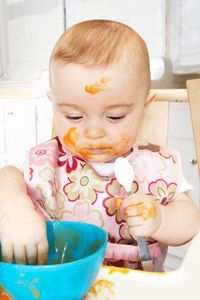 Try to avoid stressful and nervous situations, feed him in a calm, comfortable atmosphere.
Try to avoid stressful and nervous situations, feed him in a calm, comfortable atmosphere.
If the baby refuses to eat or eats very slowly, do not rush or force him to eat. Also, do not force the little one to eat foods that he refuses. Otherwise, in the future, he will have a negative attitude towards the feeding process, refuse to eat any food at all. He can even feel sick and vomit only with one kind of food.
Important
Games and cartoons during meals do not really improve appetite. On the contrary, in this way you only teach the baby to eat without noticing the dishes.
With the help of our tips, you can create a menu for a child at 9 months for every day, which will meet the requirements of a healthy diet and preferences of the baby
1. What should not be given to a child at 9 months?
It is not recommended to give cow's milk until the age of one. It contains too much calcium, which overloads the kidneys, and protein, which is poorly digested.

